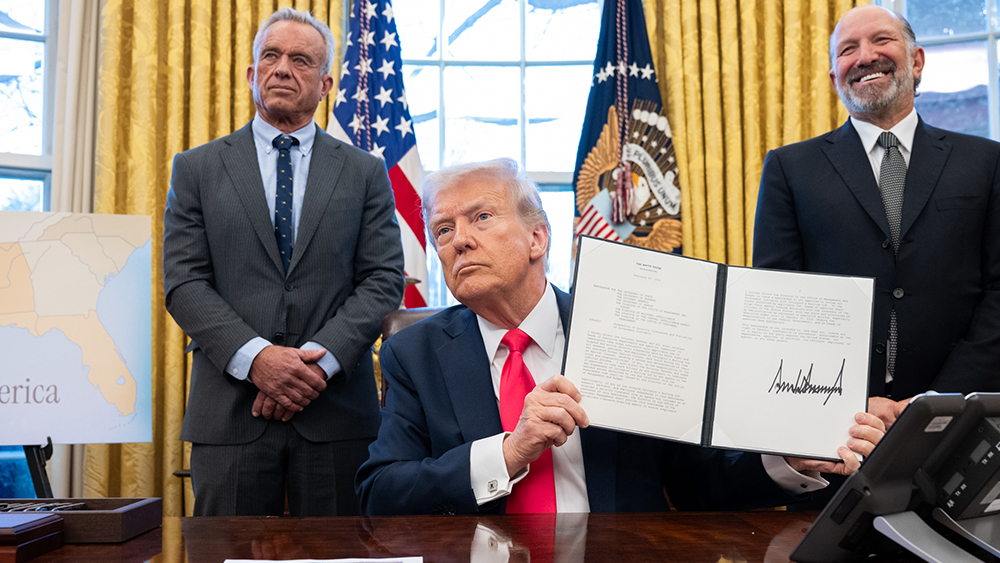 Parler
Parler Gab
Gab
Employers pull out all the stops to attract workers
Julia Pollak, chief economist at online employment marketplace ZipRecruiter, said that employers are now pulling out all the stops to attract workers. "Historically, we've seen 2.4 unemployed people per job opening at any one time on average, but now it is 0.6 unemployed people per opening. Businesses are fighting a war for talent," she said. The high demand for labor has pushed businesses to offer higher pay, with the lower-wage workers posting the biggest pay raises. The leisure and hospitality industry, which usually has the lowest hourly wages among the sectors tracked by the BLS, now offers its non-management workers bigger raises than managers, hitting nearly 16 percent. There are plenty of factors that contributed to these wage changes for leisure and hospitality workers, but the most prominent was the pandemic, which afforded them more choices as their roles became much less pleasant. (Related: Why inflation is at a 12-year high.) With the stimulus checks, increased unemployment benefits, monthly child tax credit payments and other government aid offered the past two years, many lower-wage workers were able to amass a savings cushion that gave them some breathing room to look for better opportunities, according to the director of research for the EPI, Josh Bivens. Workers chose to pass on jobs in the leisure and hospitality sector or demanded more money as conditions worsened and the industry became less profitable due to capacity caps. "These public-facing jobs came with health risks as well as nuisance factors, like restricting the number of people entering a restaurant, enforcing mask mandates and increasing sanitization," Pollak said, adding that cases of assault and abuse also increased, which is why many are rethinking taking these jobs. (Related: Supply shortages drive inflation to record levels.) Because of the high turnover rate, businesses offered more attractive salary packages to find workers. Wages jumped so high last year due to the growing $15 minimum wage movement. With big companies providing a wage floor above the federal rate of $7.25 an hour, other businesses moved to raise pay to compete for staff as well. While the average pay at the lower end of the employment market has outpaced inflation, it still does not mean that the jobs are paying a living wage. "Headlines about rising wages for frontline workers – even rising real wages – often obscure the reality that wage levels are still low. In today’s inflationary environment, even as wages rise, so does the minimal threshold for an acceptable wage level," an analysis from Brookings Institution stated. Looking ahead, economists expect wages to continue to rise, although at a slower rate than they did last year. Whether or not it will be enough to top inflation remains to be seen.More related stories:
Survey finds most global CEOs expect inflation to last through 2023 and beyond. The dollar has entered a death spiral, and a lot more inflation is on the way. Fed survey shows Americans expect inflation to get worse. Americans are losing recent wage gains due to inflation surge. U.S. inflation tops OECD countries as Biden's economic ratings plummet. Watch the video below to learn more about the inflation crisis in the United States. This video is from the High Hopes channel on Brighteon.com. Follow Bubble.news for more updates about inflation. Sources include: Newsweek.com CNBC.com Brookings.edu Brighteon.comDeborah Birx hid covid info from Trump, altered CDC guidelines without approval
By Ethan Huff // Share
By Mary Villareal // Share
Americans lining up outside food banks as record inflation continues
By Belle Carter // Share
Diminished US refining capacity from facility closures contributing to soaring gas prices
By Belle Carter // Share
Port of Los Angeles director: US supply chain at risk if rail service does not improve
By Mary Villareal // Share
Faraday bags: The ultimate defense against digital theft and EMP attacks
By finnheartley // Share
Trump’s tough trade move: Short-term pain for consumers, long-term victory for U.S. workers!
By finnheartley // Share











